| City/Town: • Dunedin |
| Location Class: • Residential |
| Built: • 1925 | Abandoned: • 2021 |
| Status: • Demolished |
| Photojournalist: • David Bulit |
Table of Contents
Kellogg Mansion
Edward Frischkorn
Although the Kellogg Mansion is well known to have been owned by W. K. Kellogg, founder of the Kellogg Cereal Company, he was actually not the first owner nor would he be the last. The mansion was built over several years starting in 1925 as the personal home of Edward Frischkorn. Frischkorn was a Detroit businessman and home builder who developed Dunedin Isles between 1925 and 1929. His original plans included building five islands, which never happened.
Many of the homes he built were in the Mediterranean Revival and Spanish Colonial styles and his personal residence was no different. Then known as Villa Marino, it featured soundproof rooms, secret passageways, stained glass windows, mosaic tilework, Moorish arches, and curved Spanish-inspired staircases. One particular feature, a staircase to nowhere, suggests it may have been designed by Addison Mizner, probably the most prominent architect of the 1920s whose works can be found all throughout South Florida. Mizner was known for his love of such theatrical staircases.
Dunedin Isles was to include two 18-hole golf courses, a country club, a hotel, marinas, and homes for 50,000 new residents. By 1928 however, hundreds of properties owned by Dunedin Isles were delinquent. With the start of the Great Depression, the project had failed. Frischkorn sold his mansion to Austin Selz, an executive for Chicago-based shoe manufacturer Selz, Schwab & Company. Although the company was ranked among the leading shoe manufacturers in the Midwest, the company failed as the depression crippled its sales. Shortly after the mansion was purchased, it went into foreclosure. It was in 1934 that the home was purchased by W. K. Kellogg as one of his winter homes.
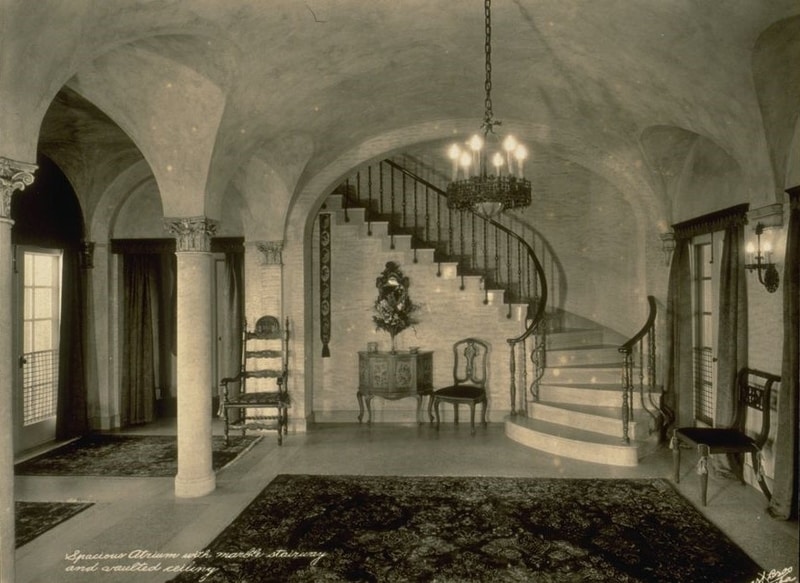
Will Keith Kellogg
Will Keith Kellogg, commonly referred to as W. K. Kellogg, is best known for being the founder of the Kellogg Company. Born on April 7, 1860, in Battle Creek, Michigan, Will was a young businessman who had started out as a traveling salesman selling brooms before helping his brother Dr. John Harvey Kellogg run the Battle Creek Sanitarium. The Sanitarium was a world-renowned health resort based on health principles advocated by the Seventh-day Adventist (SDA) Church.
While Dr. Kellogg’s medical treatment included all branches of medicine, there was always an emphasis on fresh air, sunshine, exercise, rest, and diet. The SDA dietary practices eliminated meats, condiments, spices, alcohol, chocolate, coffee, and tea so nutritious substitutes were created to replace them. Dr. Kellogg developed a wide variety of vegetarian foods most of which were made easy to chew and digest. The foods he developed tended to also be bland as the teachings of Seventh Day Adventist co-founder Ellen G. White recommended a diet of bland foods to minimize excitement, sexual arousal, and masturbation.
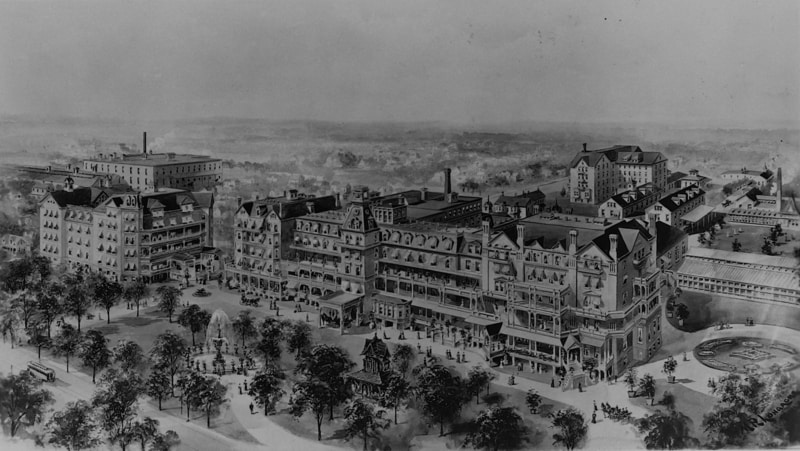
Kellogg Cereal
In 1877, Dr. John H. Kellogg developed a dough made of wheat, oats, and corn which was baked at high temperatures, and then broken down into crumbs. This became the sanitarium’s first cereal known as “Granola”. In 1890, the Sanitas Food Company was formed to develop and market food products. In 1894, Dr. John Kellogg was in the process of cooking a batch of dough when he was called away. When he returned the next morning, the wheat had become stale. Instead of throwing it out, he decided to run it through the rollers anyway which came out in small flakes. “Granose” as it was called was the world’s first flaked cereal. Cornflakes made from toasted maize followed in 1898 and a version with a longer shelf-life in 1902.
At first, the Kelloggs sold their products mainly by mail-order and exclusively to their former patients. While Will saw the commercial potential in the discovery, his brother was not interested in business and allowed anyone in the sanitarium to view the flaking process. Charles William Post was one of these former patients who founded the Post Cereal Company, copying the process to sell his own brand of cornflakes.
By the early-1900s, there were dozens of cereal companies, and the refusal to commercialize their discovery caused a rift between the Kelloggs. An argument between the two ensued after Will suggested adding sugar to their product which went against his brother’s firm belief system. So in 1906, Will founded the Battle Creek Toasted Corn Flake Company, producing and marketing the highly successful Kellogg’s Toasted Corn Flakes. The company was renamed the Kellogg Toasted Corn Flake Company in 1909.
W. K. Kellogg was a philanthropist and established the W. K. Kellogg Foundation in 1930, ultimately donating $66 million to it. In 1931, he directed most of the company’s factories to shift towards 30-hour work weeks instead of the usual 40. He stated that he did this to give more people the opportunity to work during the Great Depression.
Dunedin
One of his longtime interests was Arabian horses and in 1925, he established a horse ranch in Pomona, California that included a mansion where he spent his winters. In 1932, he donated the ranch to the University of California but quickly grew upset at how the university managed it. Refusing to spend his winters there, he purchased the Villa Marino in Dunedin in 1934. Although he only spent two winters at the Dunedin home, he enjoyed the glass-bottom boats of Tarpon Springs and was a frequent guest at the Sarasota home of John Ringling of Ringling Bros. and Barnum & Bailey Circus. He donated his Dunedin home to the W. K. Kellogg Foundation in 1935. Will Keith Kellogg spent much of his later years in Battle Creek where he died at the age of 91 on October 6, 1951.
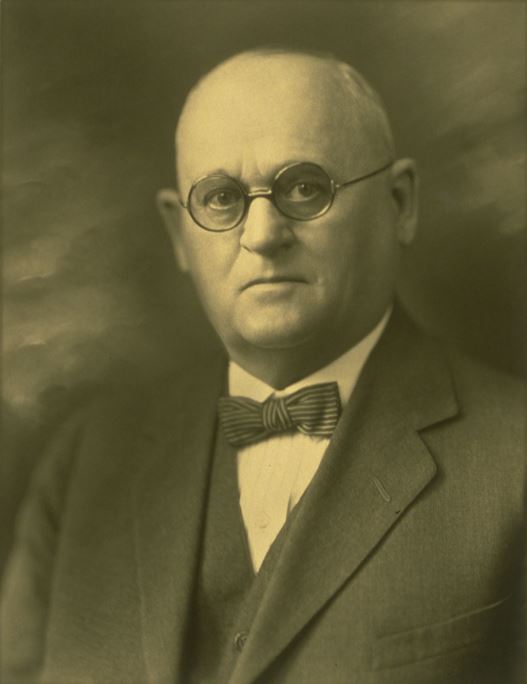
World War II
On Dec. 31, 1942, the foundation leased the property to the U.S. Marine Corps, and it became part of a base for Marines testing and training on Roebling “Alligator” amphibious landing crafts. The house served as the nonmarried Marine officers’ quarters. The Roebling family were mainly civil engineers notable for their design and construction of the Brooklyn Bridge.
While living in Florida in the early 1930s, Donald Roebling began work on an amphibious tracked vehicle that could be used to rescue survivors of floods and hurricanes. The United States Marine Corps became interested after learning about this new invention through an article in Life magazine. The design was militarized for use in the war and the first contract was awarded to the Food Machinery Corporation (FMC). The first LVT-1, unofficially known as the Alligator, rolled out of FMC’s factory in Dunedin in July 1941. Before they saw combat, Marines piloted them from Dunedin Isles to practice landings on Honeymoon Island.
William L. Matthew
The foundation sold the house in August 1946 to William and Caroline Nolan. William L. “Bill” Matthew, a newspaper broker who handled numerous mergers and sales for some of the nation’s biggest publishing chains, purchased the home in 1964. It was under the ownership of Bill Matthew that the mosaic tilework was added. Painter Don Ringelspaugh who also worked at the Kapok Tree Restaurant in Clearwater was commissioned to paint the murals throughout the house.
Other additions to the house included a disco that had a remote control that opened up the ceiling, an elevator lined with tiger-printed faux fur, and a full bar in the carriage house. The master bedroom was also remodeled with wood claimed to have been harvested from Thomas Jefferson’s estate, Monticello, though the wood used actually came from the land known as Pantops, owned by Jefferson’s father.
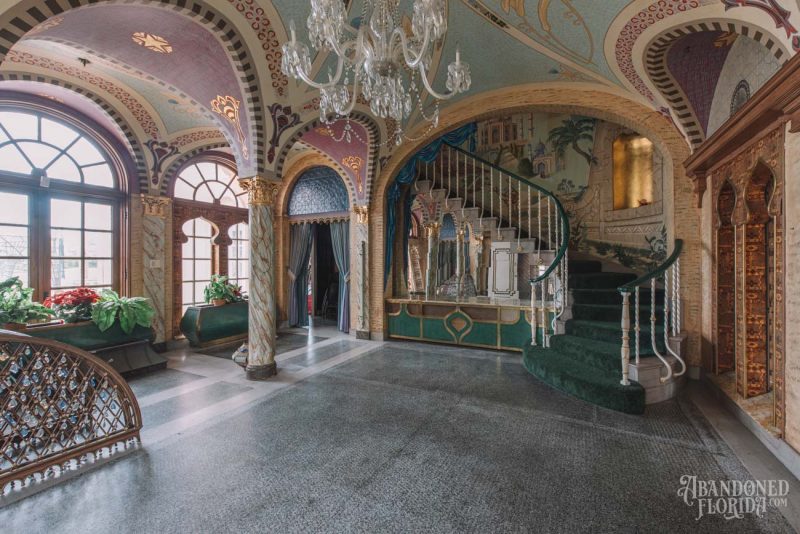
Demolition
James Nielsen, an ophthalmologist in Clearwater, purchased the home from Bill Matthew’s estate in 2003. Nielsen died in January 2021. His widow wrote to the Dunedin City Commission asking that it not vote to designate the home as historic. It was her thought that giving the home a historic designation would prevent a pending sale and any future sales from happening.
The new owners, Christa Carpenter and her husband David Wenk, made plans to demolish the home for a new one as renovating the Kellogg Mansion into a livable home or museum wasn’t realistic due to asbestos, structural issues, and mold prevalent throughout the house. Christa Carpenter got a guarantee the city would not designate the Kellogg home as historic which would prevent them from knocking it down. In exchange, the mayor of Dunedin, the seller, and the new owners signed a contract allowing the city to first take a number of fixtures, statues, and other pieces the owners say are worth at least $100,000. The city planned on auctioning off the salvaged items to fund the Dunedin History Museum and future preservation projects.
When Carpenter arrived at the Kellogg House, she found it stripped of the valuables promised to the city. Statues and fountains were uprooted, wrought-iron door frames and chandeliers were removed, and doorknobs and doorbells were missing. She called the Pinellas County Sheriff’s Office and reported a burglary. It was found that Tampa Bay Salvage was the culprit claiming they had permission from “a person we believed to be the property owner” to carefully remove and sell the items, and thought they were doing so legally. Having been misled by the previous owner, Tampa Salvage brought back the items.
The city of Dunedin and the museum are preparing to scan the interior of the home to create a three-dimensional exhibit that preserves the mansion virtually and to begin auctioning the donated items. The house was demolished in February 2022.
Author’s Note: I would like to thank Blair Kooi, Dunedin Historical Society president, as well as Christa Carpenter for giving me the opportunity to photograph the house.

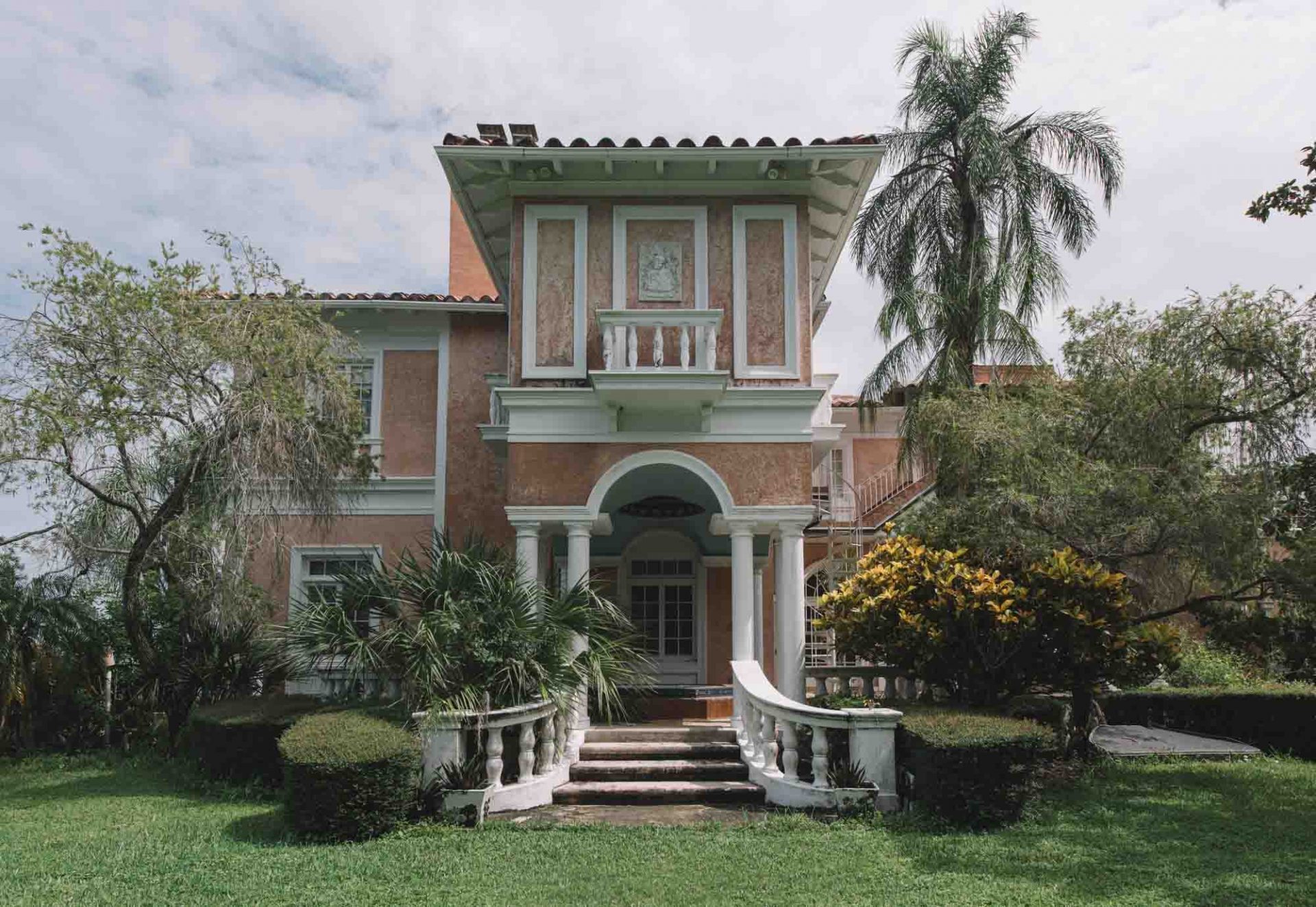
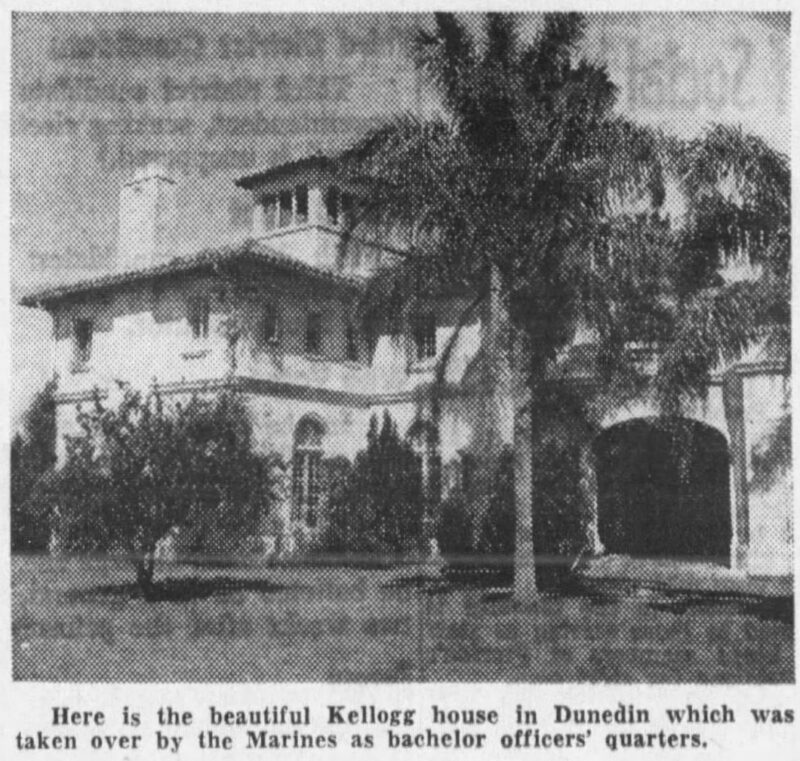




























































This is so Awesome! I can’t imagine waking up to such beauty every day. Or being able to sit, and look out at the beautiful scenery. I hope when they demolish it this year, they remove all of the stained glass first. tyvm for sharing the pictures. I enjoyed them! God bless you!
Would they sell this place instead demolishing it?
Sadly, it was demolished just a week ago. The owners gave anyone who wanted the house the option of moving it, but the logistics of it were just too expensive as it was estimated to cost millions to move by barge.
I came to this site to peruse various abandoned buildings in my region and, to my surprise, came upon a house I lived in the early 2000s. It feels quite surreal to see it again and to know it’s gone for good. Somewhere, I have a few old pictures of the home in the process of being renovated as well as several of Bill’s car collection. Attached is a scale model of the bar from the guest house and pic of Bill and Velma (Matthews).
I don’t have any cool stories to tell unfortunately, as I was just a child at the time and it’s been twenty years. My memory has certainly eroded. I do remember that I spent most of my time in the library, maid’s kitchen, statue garden and the bar. Their gardener would attempt to convince me there were secret tunnels under the home. I suppose we can lay that story to rest.
If anyone who comes upon this remembers a little tiny blonde girl roaming the grounds between 2000 up until Bill passed, hello!
That in and of itself is a wonderful story. That scale model is also a work of art and something to be cherished, especially since the home is no longer around. I would love to see the photos you have of the renovation process if you ever come upon them. Thank you so much for sharing!
I wonder how much this place is worth.
What would the house have sold for in, say, 2010?
I’m really unsure how much it would’ve sold for as property values rose dramatically during that era. In 1994, it sold for $248,500. Nine years later in 2003, it sold for $2.5 million. SO I would say maybe $3 million in 2010?
Thank you, this post definitely brought me back! I’ve been scrolling through various urbex photos and wracking my brain since I last wrote to see what other memories would surface.
Here is a throwaway drive with photos of what the home once looked like inside: https://drive.google.com/drive/folders/1n89cyCtDn4Xahg3d2nEcxXz0SjS2zuZF?usp=sharing
Note: All except the last photo are not photos I took; they were used in a listing some time ago that I can no longer find. Please link the original artist if you are able to locate the photos. This is how I remember the house.
This time, I also attached a photo of several photos I’ve found. The top two come from a collage of the renovations I’d made for Bill. I cringe a bit now that I cut up all those renovation photos as a kid and I’m a bit worried the two I found are all that’s survived over the years. The left one was the beginning of a coat of arms installation, the right one is him smoking a pipe. Not much. 2nd down is Bill and my dad in Bill’s last year of life. Third down is when the dock was first finished. Fourth is a portion of Bill’s car collection when the garage was in working order. I don’t have many more of the renovations right now, but I know I once had dozens more I’d worked with to create the collage.
You really did the house justice in its last whimpers of existence, thank you! I had a great trip through my own memories. If anyone has corrections, please update my recollection. I was only 10/11, so it’s very possible I’m misremembering many things and I’d love for someone to help me solidify the memories of my time here. I went through your photo collection and jotted down what I could remember based upon them:
2nd picture: the lion fountain! Bill had trouble getting this to work and I believe it was mostly shut off while I was there.
3rd, 4th, 5th pic: I’m really glad that Don and Bill are getting more credit for his work on the house. In articles I used to see, Kellogg himself got credit for commissioning the murals. They were definitely pretty much all Don’s vision. He was(is?) an amazing artist.
8th pic: The garage that is in the last pic in my drive, almost the same exact angle, too!
10th pic: This hot tub was not functional while I was there. Bill would fill it for guests then drain it and keep it turned off.
11th and 12th photo: this dock has a lot of memories for me. It was the last addition to the house. From what I remember, my dad was friends with Don (the muralist), which is how we met Bill. Bill had the dock built as far out as legally allowed. He was very specific (I read an article that called him an eccentric and that was very correct). My dad helped him build/design the dock, but I’m sure there were more engineers involved. My dad had a debilitating accident on the dock on the 4th of July, which was the reason Bill and Velma took me in the first place (he was in hospital for some time). I wonder if the dock is still standing…that’d be interesting on a personal level. The last addition to the house and the “reason” I lived there…
13th photo: This outside hallway was what I considered to be part of the “statue garden”. I loved sitting out here and reading. This is where I usually chatted with the gardener. I was mostly left alone during my time here, so I tended to chat with the staff and had get myself up and put myself to sleep. Definitely an interesting way of living when you are 10/11 and a child of a worker for the family.
14th/16th/17th/18th photo: the grand entrance! Absolutely look into my drive link if you want to see how this space once looked! This was the focal point of most parties! Both Bill and Velma seemed so proud of how this space turned out. It’s a mixture of so many art styles and pieces. I wouldn’t be surprised if the most expensive art pieces were located here.
23rd and 24th photo: this was once the grand dining room. Look for that same red carpet in my drive photos to see how it once looked.
25th photo: this space has a lot of memories for me and it’s interesting to see it overrun by boxes and nick-knacks. I consider it part of the maid’s kitchen. There was once a table here. It was often the coolest room of the house temperature-wise. I set up my PlayStation 2 here
26th photo: for those who haven’t been to the house, this was the “maid’s” kitchen. You can see the entrance to my “gaming space” in this photo. It was designed so that the temperature was cooler to cook in the FL heat. I’d usually come from reading in the statue garden, cool off here and play video games.
29th photo: Oh, the elevator. Bill wanted it working so badly, but it needed a lot of updating. Having an elevator was a source of pride it seemed. He renovated it, but I don’t remember it being usable to guests until he met several codes(?).
30, 31st photo: the library. Wow. This was my favorite space. Somewhere in that room was a promo holographic Mew card I received from the Pokémon Movie 2000. One day, I was playing and lost the card in the books somehow and wasn’t able to pick out where I stored it. Now it’s definitely gone. Every time Velma would visit me, she’d give me an beanie baby and I’d keep it in the library. Photo 31 used to have an entire collection of beanie babies hahaha
32nd photo: you (the explorer) already know the disco room was accessible via the library. Bill talked about installing a false bookcase instead of the shutter/glass door so that it was a “secret” disco room. He was really excited for the disco room. I wasn’t allowed in there often since I was a kid and it was an adult room only.
33rd photo: the master bedroom. This is the proverbial Thomas Jefferson wood.
35th photo: only bathed here once. This was Velma’s favorite room.
36th photo: ….my room. It’s a guest room. #1367545889832 in my drive if you want to see what it once looked like. It was never “my room”, but I also stayed in this room for like a year…weird to see it moved around…
41st, 42nd, 43rd photo: the rooftop bar was Bill’s least favorite part of the house. He wasn’t sure what he wanted to do here and kept it closed off unless there was a party/event in the house. The bar was never stocked, the fountain never worked and it was left unfinished. He was much more proud of the interior bar, thus the scale model.
44th photo: the interior bar featured in my scale model. When my dad worked with Bill, we mostly met in here. I think we also spent time with Don here, but I could be mistaken. I cannot remember Don’s face, though I have some sketches and drawings from him. I loved drawing and art, myself, as did my dad. The photos in my drive show the barstools that used to be here. I’d sit and draw and draw and draw. Bill was very encouraging of my own artistic ambitions. It’s not included in any of the photos because we brought it home, but there was a candy machine to the left of the bar that Bill would fill with bubblegum for me. He had an antique cash register on the bar and would dispense pennies upon pennies so that I could fill my cheeks as full as I could with gum. What a fun memory. Thank you for bringing that back!
50th photo: I used to think of it as a spaceship, but I believe it was supposed to resemble a submarine haha.
Thank you again for the wonderful exploration and photos to help preserve the end of this home’s life! It definitely brought back memories and I’m grateful to have them again.
Thank you for sharing. I have a question that maybe you could answer. The tower of the house looked like it was accessible at some point. Was there any way up into that section or was it primarily for aesthetics?
Hi there!
Thank you for these posts! I love all the history behind abandoned places. This house was superb, I can’t help but feel sad that it has been demolished. What happened to everything inside the house? Or even with the stained glasses? So much history is just being erased so easily.
Thank you again!
Everything in the house was auctioned off with the proceeds going to the local preservation society. It was a deal the city made with the owners—give us everything in the house to be sold at auction and you can demolish this historic landmark.
Thank you ! The Kellogg Foundation sold this house circa 1946, I believe, because W K Kellogg had amassed a ‘quite a few’ homes at the time of his death, therefore it wasn’t considered ‘special enough’ to keep. However and sadly, there’s little appreciation in general for ‘old’ in the US, too many of these type of homes are lost to developers because they needed new roofs, new plumbing, new electric, god forbid they have actual brick walls..bad news as they cannot change the floor plan on a whim !? Estate agent to owner; ‘well, we’ve acted upon your instruction but as we tell all our new clients, the only sensible option is to start afresh, demolish !’ It’s at this point where the new owners, again and again, lose all semblance of the sense of charm that must have originally attracted them to the property. Six months on it’s now still just a plot of land with the same type of generic build just awaiting approval.